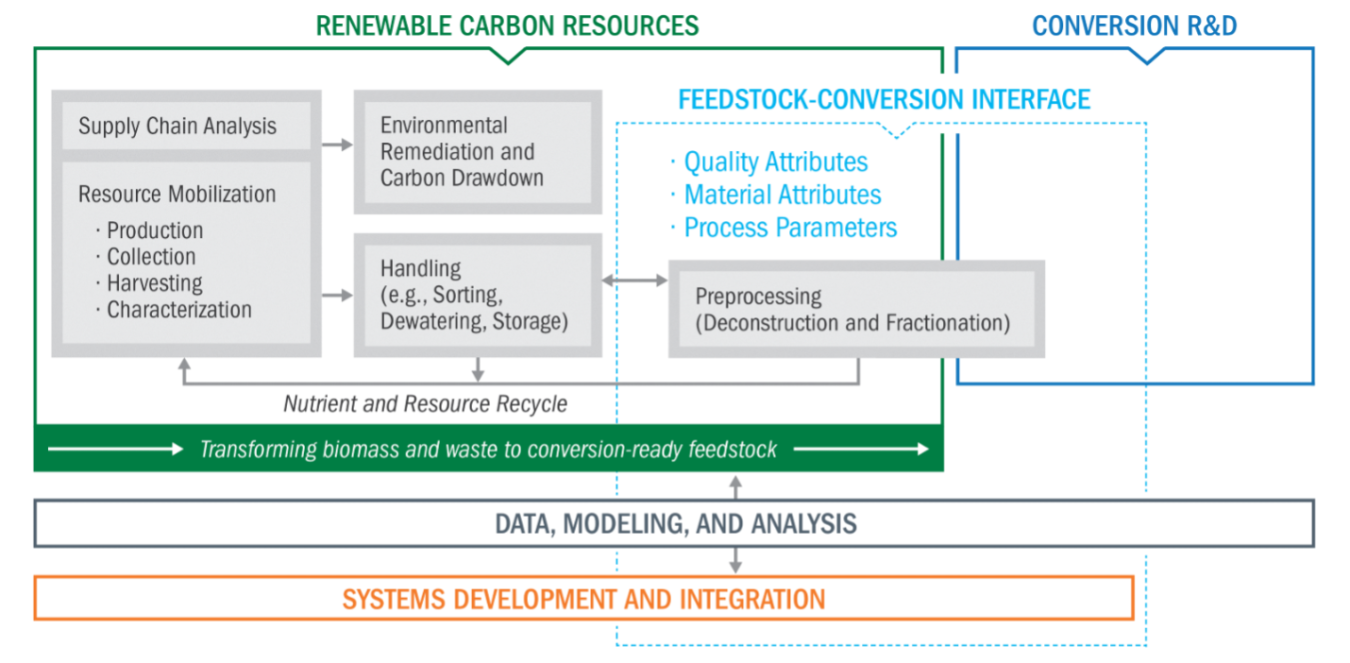The U.S. Department of Energy Bioenergy Technologies Office's (BETO) Renewable Carbon Research (RCR) subprogram's research, development, and demonstration (RD&D) efforts are designed to maximize supply chain system efficiencies and to identify the key feedstock quality and performance factors affecting biorefineries. In addition to increasing the efficiency of current conventional systems, the RCR subprogram assists in the development of innovative advanced supply chain systems that will be required to mobilize the entire billion tons of biomass and waste streams. RCR coordinates closely with each of BETO’s subprograms to achieve BETO’s performance goals.

RCR subprogram RD&D scope and interface diagram
The RCR subprogram supports both applied research projects and pilot-scale projects on the production, harvesting/collection, supply logistics, storage, and preprocessing of biomass and wastes to feedstock. Feedstocks are defined as renewable carbon resources that have undergone one or more preprocessing operations to meet the quality characteristics required for feeding into reactors and efficient conversion into bioenergy and bioproducts.
Responsibly and efficiently mobilizing the wide range of carbon resources takes close coordination with stakeholders and with many other federal offices and agencies. Broadly, the RCR subprogram coordinates with U.S. Department of Agriculture on agricultural and forestry resources, DOE’s Office of Fossil Energy and Carbon Management on CO2 and industrial waste gases, and various other government agencies on algal resources primarily through the Biomass R&D Board.
According to BETO's 2016 Billion-Ton Report, an estimated 1 billion tons of biomass could be sustainably produced for biofuel, bioproduct, or biopower applications in the United States. This biomass is enough to displace approximately 30% of U.S. petroleum consumption or enough to meet the U.S. government-wide Sustainable Aviation Fuel Grand Challenge goal to produce 35 billion gallons of sustainable aviation fuel (SAF) by 2050.

